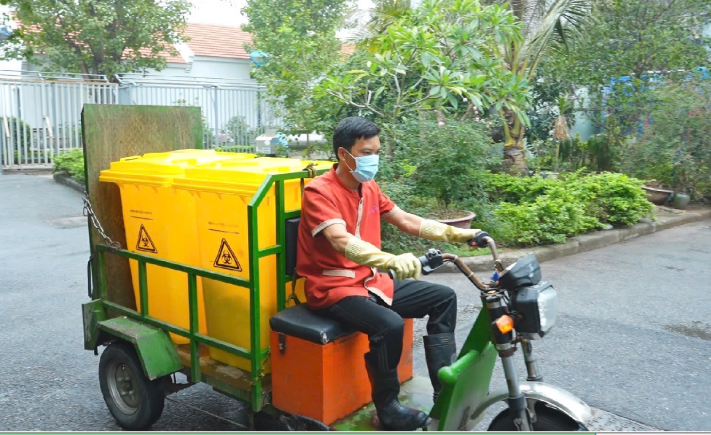A video titled "Detectives stake out Bach Mai Hospital morgue, revealing crimes more horrific than fake milk and counterfeit drugs silently poisoning the population" has been widely shared on social media.
Despite its sensational title, the content of the video shows images purportedly from the hospital's waste collection area, alleging that staff were smuggling waste outside to recycle it into household items like straws and utensils, thus endangering the community.

On the afternoon of April 28, Associate Professor Vu Van Giap, Deputy Director of Bach Mai Hospital, confirmed to the press that the information was fabricated, slanderous, and caused unnecessary panic among patients and their families.
Giap stated that the hospital had officially submitted a request to the Department of Internal Political Security (Ministry of Public Security) and the Hanoi City Police to investigate the motives and intentions behind the accounts spreading unverified information that stirred public anxiety. The hospital is determined to protect its reputation and will pursue legal action if slanderous activities are confirmed.
According to Dr. Truong Anh Thu, Head of the Infection Control Department at Bach Mai Hospital, the hospital generates 8-9 tons of waste per day, of which 6-7 tons are non-hazardous, and about 1.5 tons are hazardous, including both infectious and non-infectious waste.
Waste management at the hospital strictly complies with legal regulations, operating within the hospital premises under Circular 20/2021 of the Ministry of Health and the Environmental Protection Law. Waste is carefully controlled at its source, and recycling is conducted according to official guidelines.
Regarding wastewater, Thu explained that the hospital operates a modern medical wastewater treatment system capable of handling all wastewater generated, ensuring environmental safety. The hospital regularly organizes training for staff on both the theory and practice of waste sorting at the source.
For radioactive waste generated in the Oncology Center, the hospital collects and stores it separately in lead-shielded piping until it is rendered non-hazardous and then transfers it to authorized waste treatment units.
Concerning equipment emitting radiation, the hospital has established a Radiation Safety Committee responsible for radiation safety measures. Regular inspections ensure all machines operate safely, protecting healthcare workers, patients, and surrounding residents.
Phuong Thuy